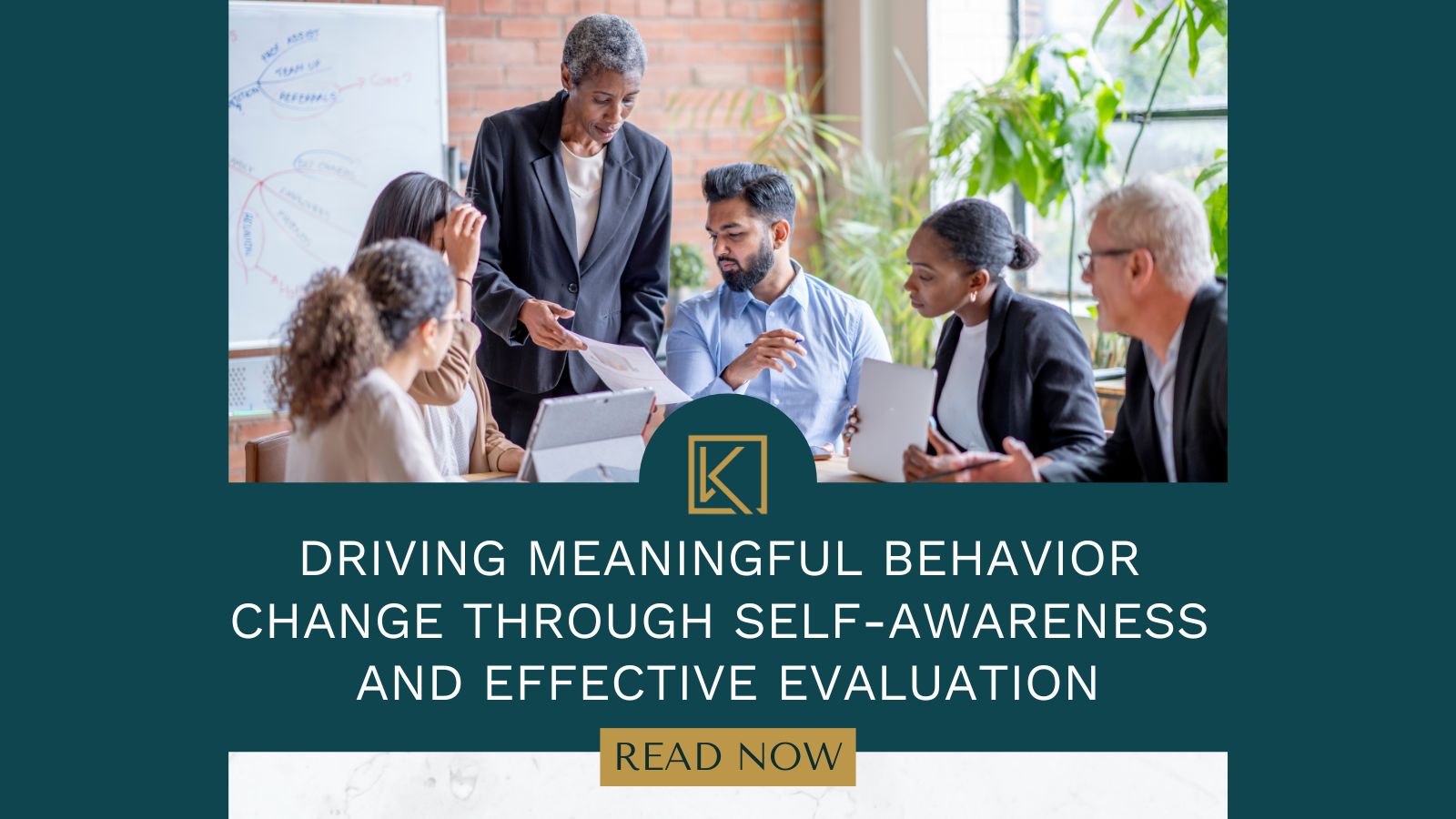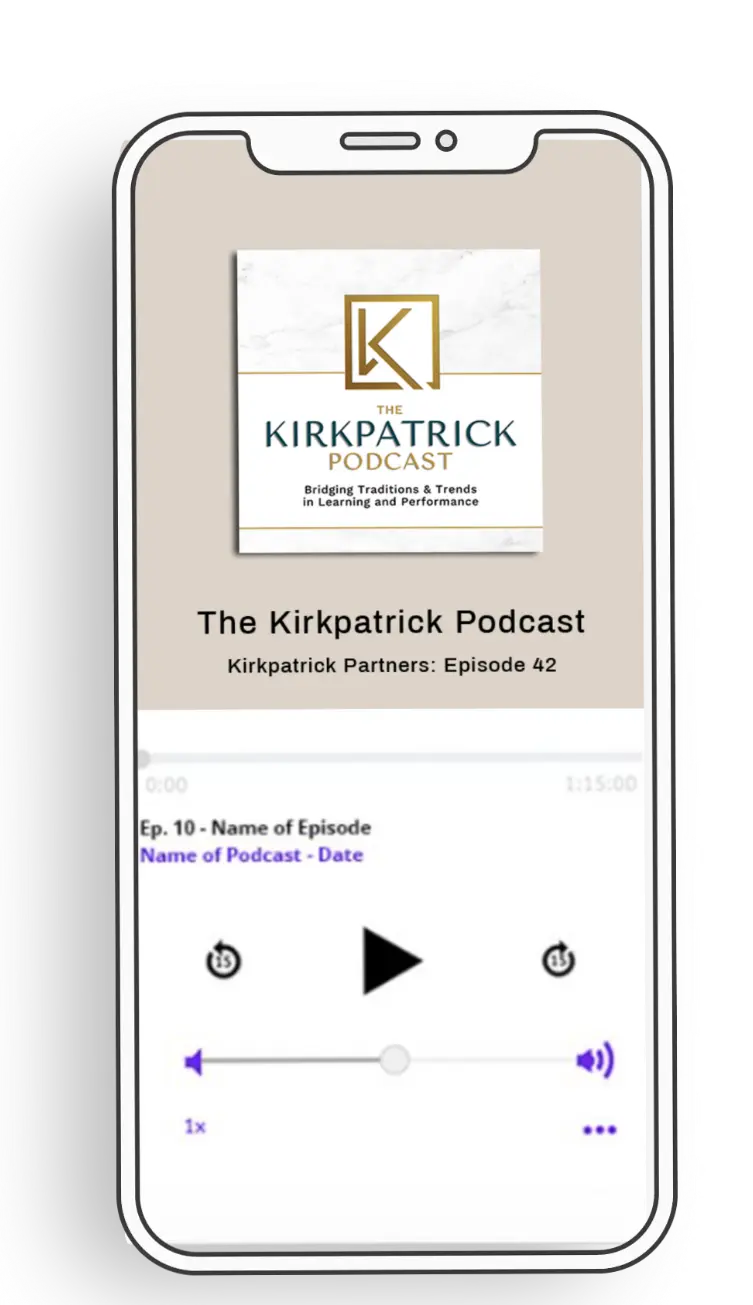Driving Meaningful Behavior Change Through Self-Awareness and Effective Evaluation

Self-improvement hinges on self-awareness, making it essential to create opportunities for reflection and evaluation to drive behavior change. In this blog, we explore how to effectively evaluate behavior and implement practical strategies that foster self-awareness and meaningful change.
The Importance of the Kirkpatrick Model’s Third Level
In the Kirkpatrick Model of training evaluation, Level 3—behavior evaluation—is critical for driving meaningful workplace change. This level focuses on monitoring how training translates into real-world performance and implementation in the work environment. Unlike simple measurement, which might involve collecting data at set intervals, monitoring requires an ongoing, hands-on approach. This continual assessment helps ensure that new behaviors become ingrained and automatic rather than reverting to old habits.
Addressing the Forgetting Curve
Research on the forgetting curve reveals that people typically retain only 20% of what they’ve learned after a week. However, retention improves when employees perceive the content as relevant and beneficial to their work. Confidence also plays a crucial role; employees are more likely to remember and apply new information if they believe they can perform the task or find help when needed. Without this confidence, there’s a risk that employees will default to familiar behaviors, undermining potential behavior change.
Strategies for Enhancing Self-Awareness
Self-awareness is thinking about what you want, what you value, and what barriers could be getting in the way. A good self-awareness practice will have you asking questions like, am I being honest with myself? Am I being truthful about what I want? Are my own behaviors benefitting or sabotaging my goals?
Here are 3 strategies to help get your employees to start asking and answering those questions:
1. Crafting Relevant Stories: To inspire action, stories used in training must resonate emotionally with learners. As L&D managers, it’s vital to identify stories that connect with employees on a personal level. Conduct market research through observation and conversations to understand the emotions tied to various topics (Hint: they’re often not what you think!). These insights help tailor stories that genuinely motivate and engage.
2. Facilitating Reflection: Encouraging self-awareness involves creating space for employees to reflect on their goals, barriers, and personal motivations. Prompt them with questions like, “What am I not doing that I’d like to do?” or “What obstacles are diminishing my enthusiasm?” Providing time and a supportive environment for these reflections is key to helping employees understand and overcome their personal challenges. Reflection can happen through a workbook and a half hour journaling session, but it can also happen more casually in the span of 5 minutes or less. What’s important is that the idea of reflection becomes a habit.
3. Promoting Practice in a Safe Environment: Offering opportunities for employees to practice new skills and receive feedback in a psychologically safe environment is crucial. Employees should feel that it’s acceptable to make mistakes and learn from them. This supportive atmosphere fosters trust and confidence, which are essential for successfully implementing new methods.
Managing Resistance to Change
Dealing with resistance to change is a critical skill for L&D professionals. Instead of viewing resistant employees as obstinate, approach them with empathy and assume a positive intent. Start by going in without any preconceived notions, recognizing that each person has unique motivations and challenges. Show genuine interest in their perspectives and contributions. Additionally, focus on what you can control within the change process and model the desired behaviors for your employees.
Driving meaningful behavior change involves more than just implementing training; it requires a comprehensive approach that includes effective evaluation, fostering self-awareness, and empathetically managing resistance. By integrating these strategies, L&D professionals can create impactful learning experiences that resonate with employees and facilitate lasting change.
Interested in learning more? Check out the latest episode of the Kirkpatrick Podcast as Vanessa Alzate and Jim Kirkpatrick welcome former teacher turned owner and chief learning designer of Sage LXD, Laine Istvan, to discuss not just how self-awareness is the lynchpin to self-improvement, but how to create opportunities for self-awareness to grow and to ultimately, drive behavior change in your learners. You’ll hear how Laine’s colorful career history, from corporate to creative to educational, has shaped her perspective and proven the validity of her strategies. If you’re looking for practical takeaways to immediately influence behavior change and a positive pep talk for how it’s absolutely possible, you’ve found the right podcast!
LEARN WITH US
If you are on the search for a community that gets you and can provide you with that support you’ve been looking for, we would love to have you as a part of our Kirkpatrick Community! Learn more and join here.
Check out the most recent episode of the Kirkpatrick Podcast
Don’t forget, the true magic happens when we modernize our training methods and see concrete results. Cultivating an environment of trust, active participation, and continuous enhancement increases the likelihood of our training programs’ success.
Interested in mastering the Kirkpatrick Model? Dive into the Kirkpatrick Evaluation Toolkit, your comprehensive resource for streamlined and impactful evaluation. Learn more here!





